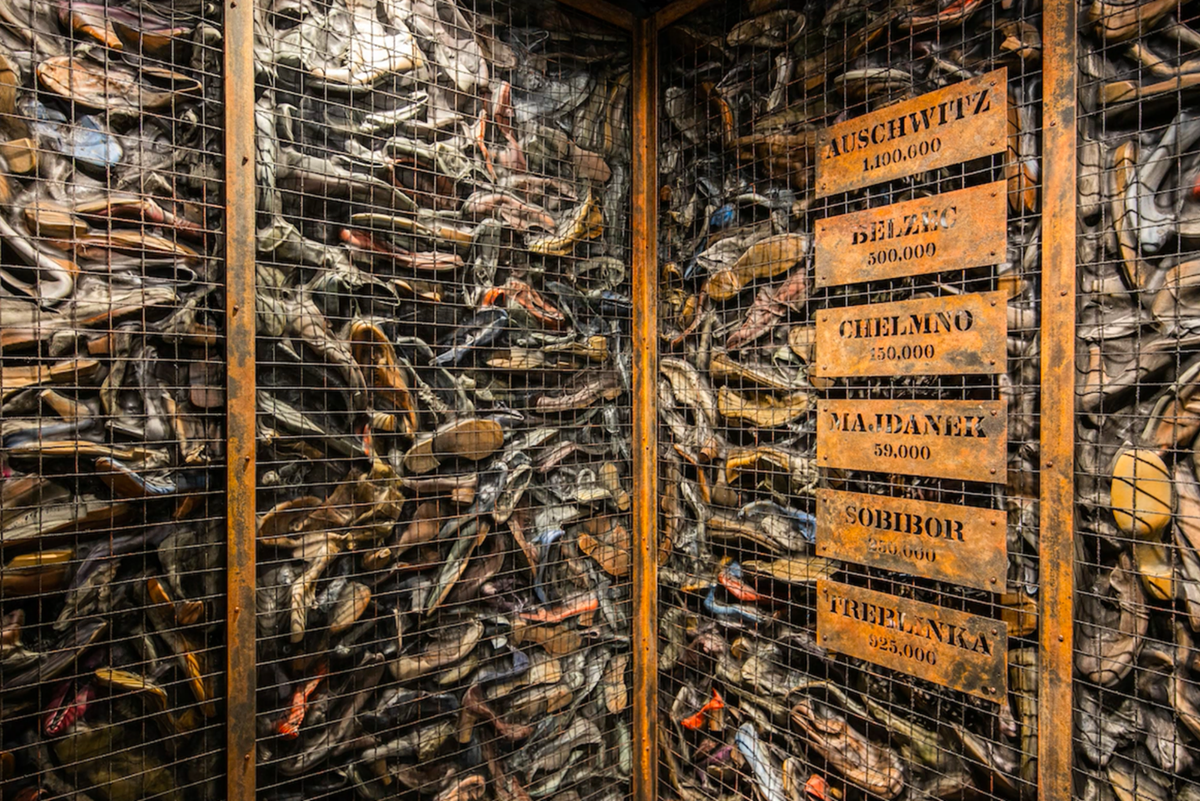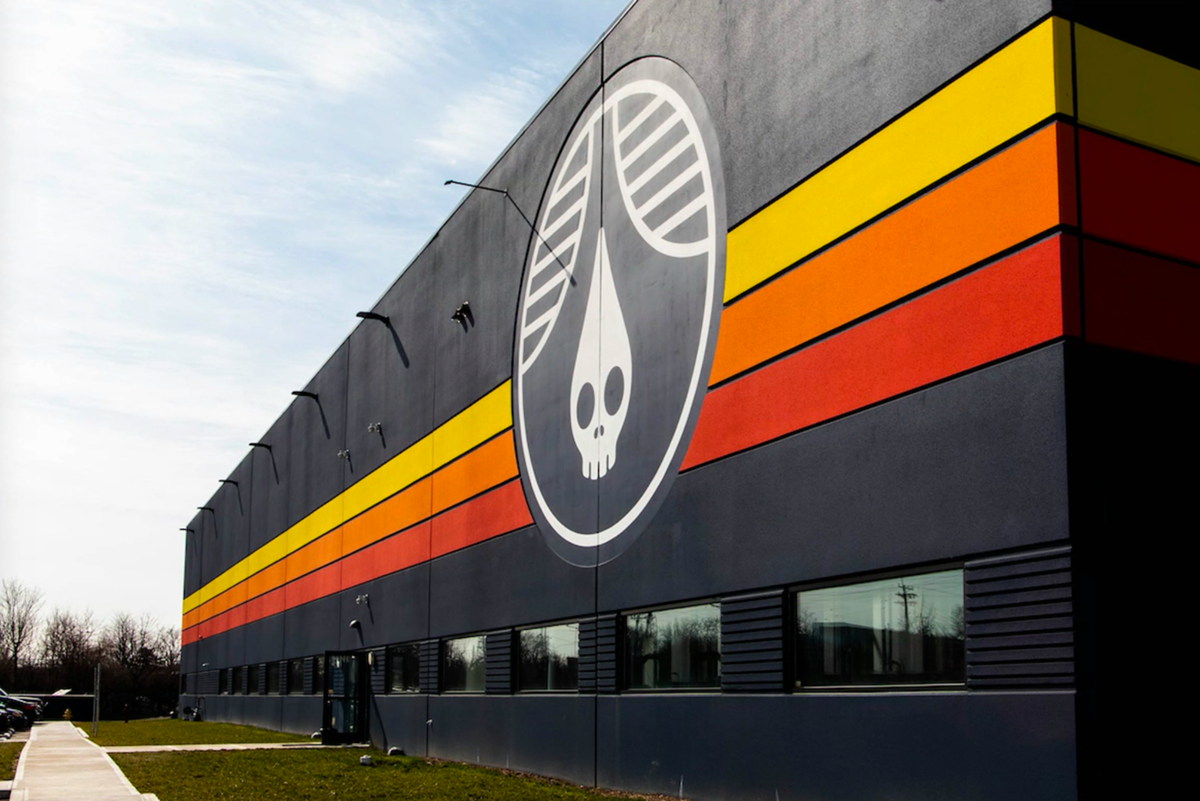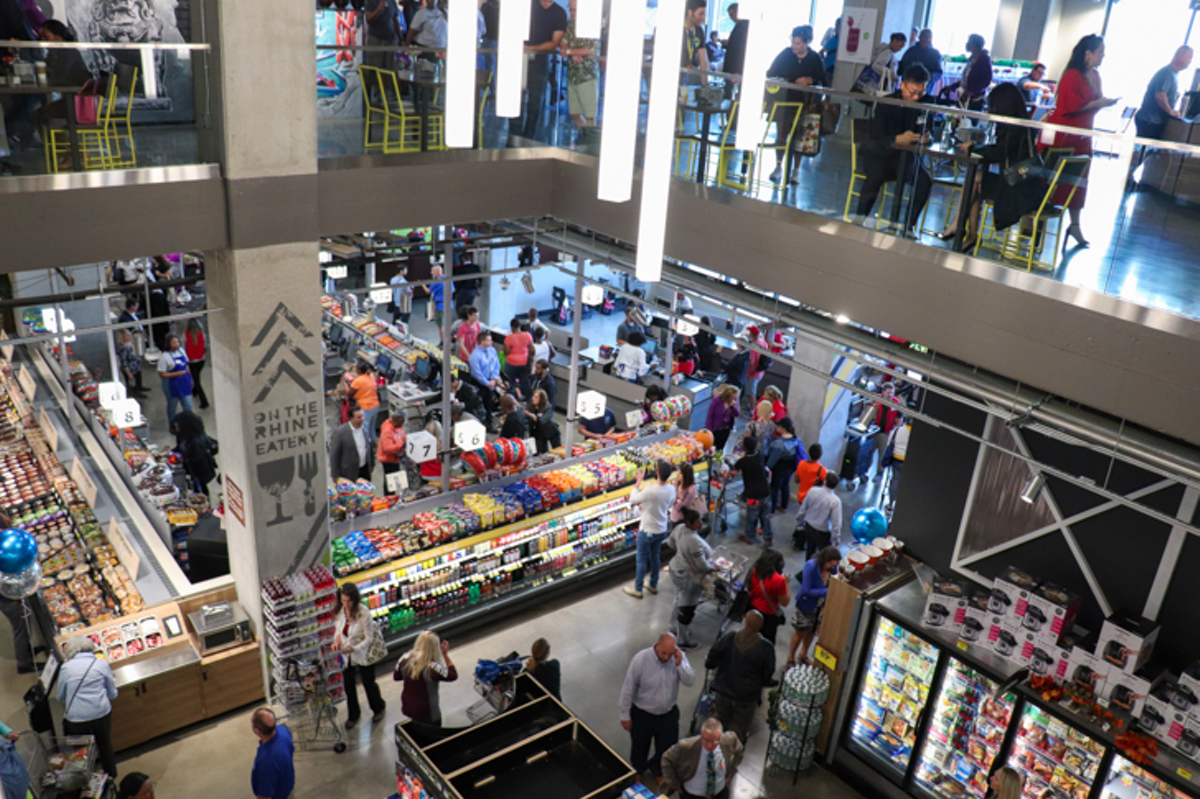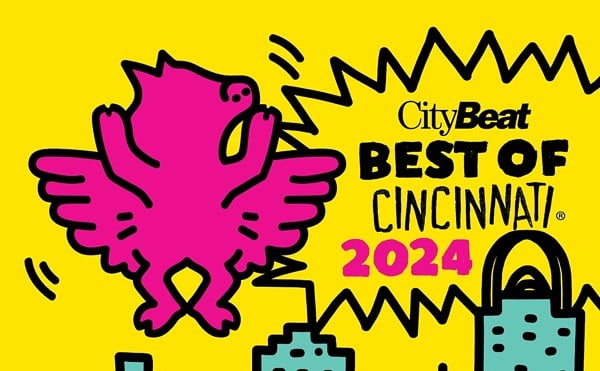Everything was cooler in the 1980s. Actually, that’s very debatable. But it’s safe to say Greater Cincinnati’s Metro buses looked pretty awesome back then. They also cost less — just 65 cents. (That’s $1.52 in today’s money — a fare lower than today’s $1.75). Starting last November, Metro offered riders the chance to relive all the glory that was 1986 on one of two “Retro Metro” buses circulating throughout the Southwest Ohio Regional Transit Authority’s bus system to celebrate four decades of Metro service. The buses sported throwback branding and a throwback cheap fare to match. Oh, and in a kind of mobile Where’s Waldo (which technically didn’t come out until 1987, but we digress) twist, if you happened to see Metro interim CEO Darryl Haley riding your bus, the ride was free. No word on whether the buses screened 1986 faves Top Gun and The Karate Kid or bumped Bon Jovi’s “You Give Love a Bad Name.” Go Metro, go-metro.com.

In 2015, Hamilton County voters approved a levy to fund the massive undertaking of saving Cincinnati’s historic Union Terminal, and three years later, in November 2018, it reopened to visitors. Today, the Cincinnati Museum Center remains in the iconic building and a new occupant — the Nancy & David Wolf Holocaust & Humanity Center — has moved into a prominent spot in the terminal’s concourse mezzanine, formerly home to the Cincinnati History Library and Archives. Founded in 2000 by Holocaust survivors and their families, the Holocaust & Humanity Center’s small museum and educational programs were previously located inside Kenwood’s Rockwern Academy, a Jewish community school. The new center now has roughly three times more exhibition space than it had previously, and the location is especially poignant given that Holocaust survivors arriving after World War II got their first taste of the city when they entered Union Terminal. That history — plus countless others — is preserved thanks to the renovation. Cincinnati Museum Center at Union Terminal, 1301 Western Ave., Queensgate, cincymuseum.org; holocaustandhumanity.org.
2. Current at the Banks
3. 1010 on the Rhine
2. Fischer Homes
3. Zicka Homes
2. Music Hall
3. Cincinnati Art Museum

One day, there was just an empty field. Then, seemingly overnight, Rhinegeist’s new Camp Washington facility was present along Spring Grove Avenue looking for all the world like a racing-striped vintage motorcycle gasoline tank, one of those really rad three-quarter-sleeve T-shirts your dad used to wear while working on his Ford Grenada and drinking PBR, or well, like a can of Rhinegeist. Fitting. The dark blue building with the red, orange and yellow stripes is a warehouse and brewing facility for the bustling brewery, but despite its shiny newness, it fills us with a strange sense of nostalgia.
For years, Greater Cincinnati has suffered due to a bus system it has outgrown and crumbling roads and bridges. But there is a possibility to help remedy both of those issues: a ballot initiative called Issue 7 that would raise the county’s sales tax by .8 percent to increase bus frequency, add new routes and make some popular routes run 24 hours a day. Three-quarters of the estimated $130 million a year the 25-year levy would raise would go to bus service, while another quarter would go to infrastructure improvements throughout the region that benefit public transit in some way. According to the ballot language, none of the money could be used for Cincinnati’s streetcar. Should voters approve the levy, the .3 portion of the city’s earnings tax that pays for buses would be eliminated, per a citywide ballot issue that voters gave the OK by a wide margin. That would mean those who work in Cincinnati would pay $50 million less in taxes. The bus system badly needs more funding. It faced a $5.8 million budget deficit last year and needs many millions of dollars in investment to become better-functioning and connect more Greater Cincinnati residents to jobs and studies local officials say. The levy has drawn bipartisan support from progressive groups, noted conservatives and Cincinnati’s business community. If it passes, it could mark a new age for public transit in Greater Cincinnati.
2. Clifton
3. Over-the-Rhine
2. Rose Lavelle
3. Todd Portune
4. Thane Maynard
5. Molly Wellmann
6. Bootsy Collins
7. Marty Brennaman
8. Bob Herzog
9. Tamaya Dennard
10. Pete Rose
Learning how to be yourself can be hard when you’re young. It’s especially difficult when you’re navigating questions about your gender identity. Last year, a Cincinnati-based nonprofit called Transform launched in the back room of Nancy Dawson’s makeup boutique BRIDEface to make that process a little easier for area transgender and non-binary youth ages 6 to 18 by opening up a free clothing closet. With the shop growing, the group started looking for a stand-alone location, and in early January, they launched a crowdfunding campaign to get there. Making the drive all the more poignant — and painful — is the fact that Dawson has terminal cancer. Transform has gotten a few big boosts from some big names along the way. Dawson’s husband Matt Zoller Seitz (a film and TV journalist) included information on the fundraiser in a tweet that was a part of his thread about Dawson’s diagnosis. Soon after, Seth Meyers, who hosts NBC’s Late Night with Seth Meyers, shared the tweet and Lin-Manuel Miranda, creator of the musical Hamilton, recorded a video promoting the fundraiser. “I think what you’re doing with Transform is incredible,” Miranda said in the video. “I think you’re going to change Cincinnati. I think it’s really laudable.” Transform, transformcincy.org.
Cincinnati was long blessed by the long presence of — and now mourns the absence of — former Cincinnati Vice Mayor Marian Spencer, who passed away in 2019, and former federal judge and civil rights leader Nathaniel Jones, who we lost in early 2020.Spencer, who lived in Avondale, passed away last July. But her legacy will remain — concretely in the form of a section of Walnut Street downtown the city renamed in her honor in 2016 and in a wider sense through myriad contributions she made to civil rights in Cincinnati. The granddaughter of a former slave, Spencer traced her lineage back to African-American, Native American and Scottish ancestors. She came to Cincinnati with her twin sister Mildred in 1938 to attend the University of Cincinnati and stayed after marrying Donald Spencer. She received her degree in English in 1942 and had two children: Donald Jr. and Edward Spencer. It was her children’s desire to swim at Coney Island that sparked Spencer’s first big integration effort. In 1952, she organized two dozen other women to push for the desegregation of the Cincinnati water park, which at the time did not admit black people. Spencer, already heavily involved in her community, went on to become a Cincinnati City Council member and sit on the University of Cincinnati board of trustees. Internationally known civil rights advocate and Cincinnati-based former federal judge Jones died this January at the age of 93. Locally, Jones was a mentor to a number of Cincinnati political heavyweights, from Ohio Democratic Party Chair David Pepper to Mayor John Cranley to former Cincinnati City Council member and current Democracy for America CEO Yvette Simpson. Jones’ career featured many highlights and acts of courage. During his stint with the NAACP starting in 1969, Jones worked to desegregate public schools across the nation, leading to some harrowing experiences with racial violence. Later, in 1993, Jones traveled to South Africa as an observer for the country’s first democratic elections.
2. Northern Kentucky University
3. Xavier University
2. John Cranley
3. Bill Cunningham
2. Over-the-Rhine Community Housing
3. College Hill Community Urban Redevelopment Corporation
In 2019, 99-year-old Mary Frances Page received a notice that she would need to leave her apartment at 421 Wade Street in 70 days. The notice set her niece, Kim Dillard, her main caregiver, on a feverish scramble to find new housing affordable on Page’s fixed income. It also sparked an intense debate after it was revealed that FC Cincinnati purchased her building and another nearby for development around their coming $250-million soccer stadium. (FC Cincinnati General Manager Jeff Berding last year pledged the stadium wouldn’t result in displacement as the team made its pitch for building in the West End.) Eventually, with the help of the city, the Legal Aid Society of Greater Cincinnati and housing advocates, the team and residents including Page came to a confidential agreement. The upshot — Page and others had until January this year to move and received relocation assistance from the team. Dillard says it took every bit of that time and assistance to find a suitable place for her great aunt. There was the daunting search for an apartment that would accept her housing voucher and that was on the first floor without steps. There were paperwork struggles. And loud in the background, the political fight over the coming stadium’s impact on a historically African-American community that has long suffered from disinvestment and lack of economic opportunity. It’s clear that change has been hard for Page. The media attention, the back-and-forth over housing, the uncertainty — they all disturbed Page greatly, her niece says. But at the end of February this year, Page celebrated her 100th birthday in her new West End apartment. Although she’s mostly bedridden, she says she feels good. “I’m going to make it to 101,” she says. “Just hang on to the lord. He’ll work you on up there.”
2. Matthew 25: Ministries
3. The Friends of the Public Library of Cincinnati and Hamilton County

When Kroger on the Rhine, the first grocery store in downtown Cincinnati since 1969, opened last September, Cincinnatians greeted it with long lines of shoppers and celebration from city officials. Getting in on the fanfare: Cincinnati Reds announcer Marty Brennaman, the University of Cincinnati marching band, Mayor John Cranley, members of Cincinnati City Council, county officials and more. The Cincinnati-based grocer partnered with the city to build a 45,000-square-foot, two-story store as part of a mixed-used development. That project also includes an 18-story, 139-unit market-rate apartment tower and a 550-space parking garage. Urbanists and elected city leaders have salivated at the idea of a downtown store for years, but before 2017 — when the project on Walnut Street was announced — the pieces had never come together. The location has been 15 years in the making, Kroger officials say. Kroger on the Rhine, 100 E. Court St., Downtown, kroger.com.
Could Hamilton County’s thousands of vacant lots and homes help solve the area’s affordable housing shortage? That’s one idea groups working on a comprehensive housing strategy for Greater Cincinnati are looking into. Local Initiatives Support Corporation Greater Cincinnati (LISC), the Greater Cincinnati Foundation (GCF), Legal Aid Society of Greater Cincinnati, the Port of Greater Cincinnati Development Authority and community engagement firm Cohear are compiling data and public input to design a series of recommendations that could guide policymakers as they seek to address the big gap in affordable housing in the county. Currently, Cincinnati needs roughly 27,000 more units of housing affordable to low- and moderate-income residents. The county overall needs about 40,000 units, according to a study LISC completed in 2017. The question is how best to address that problem. That’s what the effort, funded by GCF, PNC Bank, the Mayerson Foundation and JP Morgan Chase, looks to do. One answer might be funding rehabilitation of the county’s thousands of vacant properties to add more housing stock in the region. Other groups are also pushing more funding for affordable housing via increased money for the city’s affordable housing trust fund.
It was a close one, but former Kentucky Attorney General Andy Beshear defeated incumbent Gov. Matt Bevin in the state’s hard-fought and closely watched gubernatorial contest. When all was said and done, Beshear won by just a few thousand votes. But the excitement didn’t end there. Bevin didn’t concede the race immediately, asking election officials to check voting machines throughout the state. In amassing his slim lead, Beshear flipped some suburban Northern Kentucky counties that Bevin won in 2015 and that fellow Republican, President Donald Trump, took in the presidential election the next year. Beshear narrowly won Kenton County and turned in a somewhat more robust performance in Campbell County. Bevin won both of those counties handily in 2015, grabbing 57 percent of the vote in Kenton. This time around, Bevin easily took Boone County with 56 percent of the vote. He also took a large red swath of the central part of the state. However, that wasn’t enough to turn back Beshear’s decisive victories in the more liberal (and populous) counties containing Lexington and Louisville. Beshear also took a run of counties — Bath, Boyd, Carter, Elliott and Rowan — on Kentucky’s eastern side and a handful of others around the state. Beshear’s victory comes despite — or, depending on who you talk to, partly because of — Bevin’s alignment with Trump. The president, who won Kentucky overall by 30 points in 2016, swooped through the Bluegrass State to campaign for Bevin shortly before the election.

As the crush of the Great Depression dragged on into 1939, the American Institute of Planners released a curious film simply called The City meant to screen at that year’s New York World’s Fair. The striking collection of black-and-white footage sat at an odd intersection of documentary film, social commentary and borderline propaganda for one of the most radical experiments the United States government would ever undertake — the wholesale creation of entire self-sufficient (and racially segregated) “greenbelt” towns ringed by forests and farmland and built around collectivist principles. The federal government built one of those towns, called Greenhills, on a flat sweep of farmland 15 miles north of Cincinnati. These New Deal towns were meant to provide work and housing for those struggling under the harshest economic calamity the country had ever seen. But they also aimed to provide a new way of living together for the white residents lucky enough to be selected as “pioneers” to settle there. But that dream — designed by a small cadre of advisors to President Franklin Delano Roosevelt, executed by his recently created Resettlement Administration and championed in its early years by first lady Eleanor — was also dead by 1939, declared unconstitutional by a federal court. Greenhills still exists, both in memory and reality, its International Style white buildings surrounded by now-mature trees planted in spots dictated by federal planners’ diagrams. The march of time and social conventions shed harsh light on the town’s segregated origins. And recent demolitions have leveled some of its original buildings. In some ways, these towns exist in their own strange moment in time. But eighty years later, the lessons of the greenbelt towns may still have some relevance as America rediscovers a love for walkability and urban green space in its cities and struggles with housing affordability, residential segregation and its fraught, complicated relationship with ideas and policies some would call socialist. Greenhills, greenhillsohio.us.







